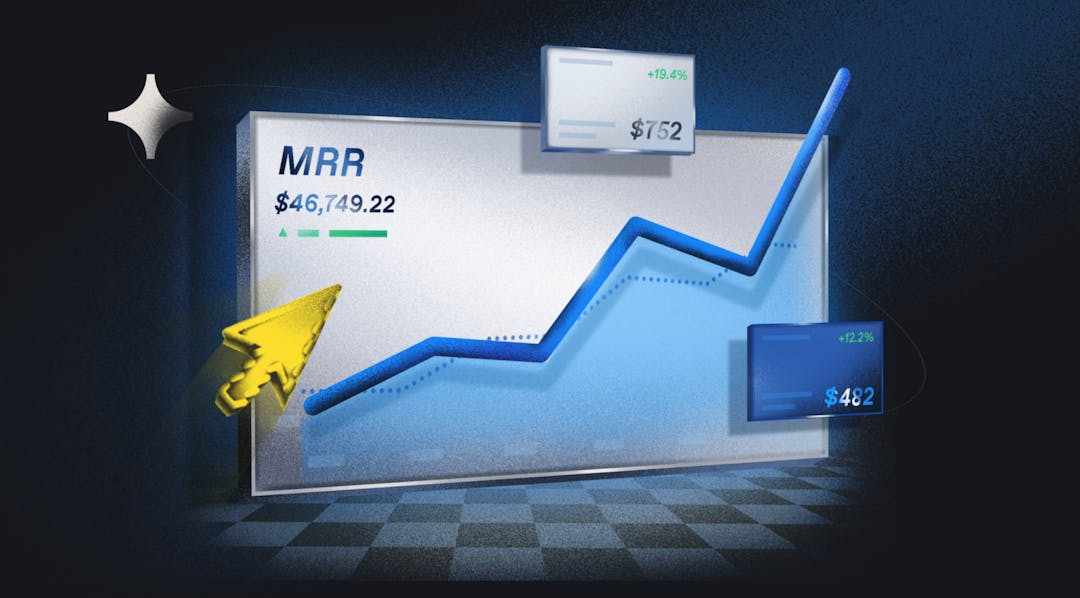What is product segmentation and how can it benefit your business? Learn more about product segmentation and see how others have implemented this strategy.
Not all customers are the same. This is, after all, the reason your marketing department performs customer segmentation and builds buyer personas. The ability to reach out to different personality types is greatly enhanced when customers are segmented this way. Reaching out to those potential customers is one thing, but pulling them in and turning them into paying customers is another. Along with differing personality traits come different customer needs and preferences. Product segmentation is a great way to cater to all the preferences in your niche market space.

What is product segmentation?
Product segmentation is when you offer different versions of your product to different groups of people. Let's imagine you're a SaaS company that has developed project management software. A team of software developers using your product might need bug-tracking features. A team of manufacturing professionals may need tools to help them organize part lists. Your company might have a base product that provides the core functionality, and several versions built around that core that cater to individual industries.
Why is product segmentation important?
You may be wondering if product segmentation is worth the effort. Depending on your business, creating these variations on your product could end up being quite a bit of work. It helps if you think of it less as a time-consuming expansion of one product and more as an easy expansion of your product range. That change in perspective alone might have sold you on the idea, but if not, let's take a look at some of the benefits that come from a good product segmentation strategy.
Cater to different customer groups
Without product segmentation, you'll either be offering customers less than they need, or more than they need. While more features isn't necessarily a problem, you don't want customers feeling as though they're paying too much extra for something they don't need. By not providing all the features they may need, you are inviting them to look for a business that caters more specifically to them. Product segmentation, particularly when built around your core buyer personas, allows you to bridge the gap between those two extremes, acquire more customers, and improve customer retention.
Segment willingness to pay data
You can segment your willingness to pay data by customer segment, but that data will be less than useful so long as there is only one identical product for everyone to purchase. Creating multiple products that serve different segments allows you to put that willingness to pay data to use by segmenting it according to your product segments and pricing them accordingly.
Monitor individual product performance
You can best prevent churn and plot a roadmap for new features by monitoring the performance of your product. When products more closely align with a given customer segment, you're able to take each product in turn and monitor its performance. This will let you get a better picture of how each customer segment responds to your product by letting you monitor the product most closely aligned with them, rather than one nebulous product.
Expose new growth opportunities
We've already talked about viewing product segmentation as an expansion of your product line. The great thing about segmenting your product in this way is that it makes it easy to uncover growth activities. As you examine the types of customers who are using your product, and the feedback you receive from your target audience, a picture will begin to form of how you can further segment your base product to appeal to a wider range of people and unlock new growth levers.
Understand the target market to determine the right pricing
Abandoning the one-size-fits-all approach of a singular product offering also allows you to abandon one-size-fits-all pricing as well. As a generic singular item, your product appeals to several customer bases. As a segmented product tailored to those customer bases, you're also able to adopt a pricing strategy that is ideal for each of those target markets.
What product segmentation strategy entails
Once you've decided that segmenting your products is a good idea, you need to begin the segmentation process. But how do you do that? What steps are involved in product segmentation, and which strategy should you take? After all, if you choose the wrong approach, you could end up spending a lot of time and money for very little ROI. Four key elements of a good product segmentation strategy are presented below.
Analysis of product usage & why people buy your product
Your existing customer base can already tell you a lot about how you should go about segmenting your product, at least initially. Look at how your current customers are using the product. Examine what industries they're in, which features each customer segment is using the most, and think about how those features can be expanded to better reach the industries in question.
Customer & market segmentation strategy
The first step relies very heavily on having a quality customer and market segmentation strategy in place. Tools like ProfitWell Segmentation can easily and accurately segment your customers across industry, location, gender, and 147 other traits. ProfitWell Segmentation is a free product that will give you all the tools you need to effectively segment your target customers, market, and products. Some important areas to consider for product segmentation are:
- Demographic segmentation - These are the basic demographic categories that most people think of when they think of segmentation. It includes items such as the age, income, marital status, and gender of your customers. This information will be useful in determining which customer segments a given product will appeal to.
- Psychographic segmentation - This type of segmentation breaks your users down based on their interests and activities. This one is particularly useful for determining how you can cater to those aspects of your customers' personality and bring a new product segment to market targeted directly at them.
- Behavioral segmentation - Segmenting by behavior is all about examining how customers behave when they interact with your product and your company. Combined with psychographic segmentation, you can get clues about which features and aspects of your product are most important to customers with a given set of interests.
- Geographic segmentation - It may not seem like segmenting your customers by geographic location can tell you much about how to cater a product to them, but different cultures often have very different approaches to a given problem. Examining how customers from different regions interact with your product can tell you a lot about how you might cater it to people in that region.
Price segmentation strategy
Once you've used your data to flesh out some ideas for different product segments, you need to decide how to price those products. While it may be tempting to set an across-the-board price for all similar products, you'll likely be leaving money on the table. A thorough analysis of willingness to pay and market realities, such as that provided by Price Intelligently by ProfitWell, will give you a clearer picture of how to optimally price each product segment for maximum growth potential.
Product positioning & effective marketing strategy
With the product segments created, priced, and ready to launch, it's time to put your marketing department to work. You'll already have information about the buyer personas your product segments are aiming to attract, so that's a great start. Again, the extra work of marketing separate products might seem like a burden, but if you've done everything correctly, the end result will be more sales and less churn.
Product segmentation examples you can look up to
Now let's take a look at some real-world examples of a couple of the world's largest businesses and their use of product segmentation. This section should help round out your knowledge of exactly how, and why, product segmentation works.
Coca-Cola
If you've been to certain smaller convenience stores, you've likely seen the least obvious way Coca-Cola segments its product. Some smaller stores in the U.S. sell the Mexican version of Coke. It's popular in certain areas of the U.S. because it's made with real sugar instead of high fructose corn syrup, since large portions of the Mexican market prefer that. Coca-Cola competitor Pepsi offers a real sugar variant of their cola for the U.S market, sold along with the high fructose corn syrup version.
Both drink companies also offer a variety of small modifications to their original colas. You can get diet versions, caffeine-free versions, and versions of extra flavors added.
General motors
Car manufacturers are another great example of product segmentation. Nearly every model from every manufacturer comes in a dizzying array of trim packages, each with its own set of options for customers to choose from. In addition to that, different brand names under the same banner offer an even larger segmentation. General consumers may prefer a Chevrolet pickup, but luxury users may opt instead of a similar model made by Cadillac. For businesses and heavy-duty usage, GMC is the go-to.
Product segmentation FAQs
What is a product segmentation strategy?
A product segmentation strategy is when a business splits their product into several segments, each designed to cater to a certain industry, demographic, or another customer segment, and the process they use to achieve that goal.
What is the difference between market segmentation and product segmentation?
Product segmentation is when a company modifies its product into several different products in order to attract different kinds of customers or target different markets. Market segmentation simply modifies your marketing strategy in an effort to do the same. Product segmentation can make market segmentation easier by more directly appealing to the target.
What are the pros and cons of product segmentation?
When done correctly, product segmentation is mostly pros. It allows you to reach new markets and forces you to take a closer look at your customer segmentation and at how your customers use and engage with your products. However, segmenting your product can be a lot of work. If you don't do your due diligence before beginning the process, you may target the wrong markets and fail to see an ROI.



